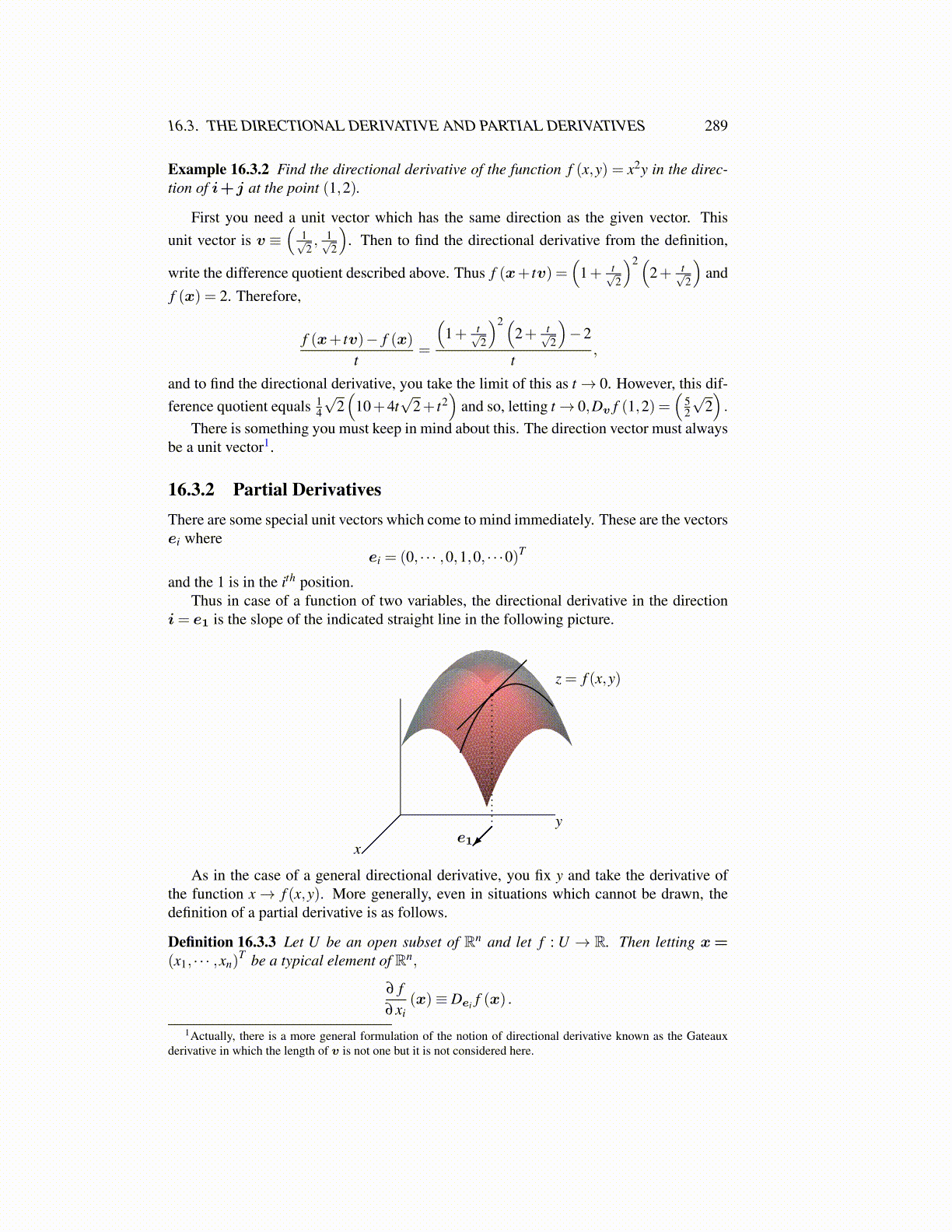
16.3. THE DIRECTIONAL DERIVATIVE AND PARTIAL DERIVATIVES 289
Example 16.3.2 Find the directional derivative of the function f (x,y) = x2y in the direc-tion of i+j at the point (1,2).
First you need a unit vector which has the same direction as the given vector. Thisunit vector is v ≡
(1√2, 1√
2
). Then to find the directional derivative from the definition,
write the difference quotient described above. Thus f (x+ tv) =(
1+ t√2
)2(2+ t√
2
)and
f (x) = 2. Therefore,
f (x+ tv)− f (x)t
=
(1+ t√
2
)2(2+ t√
2
)−2
t,
and to find the directional derivative, you take the limit of this as t→ 0. However, this dif-ference quotient equals 1
4
√2(
10+4t√
2+ t2)
and so, letting t→ 0,Dv f (1,2) =(
52
√2).
There is something you must keep in mind about this. The direction vector must alwaysbe a unit vector1.
16.3.2 Partial DerivativesThere are some special unit vectors which come to mind immediately. These are the vectorsei where
ei = (0, · · · ,0,1,0, · · ·0)T
and the 1 is in the ith position.Thus in case of a function of two variables, the directional derivative in the direction
i= e1 is the slope of the indicated straight line in the following picture.
y
z = f (x,y)
xe1
As in the case of a general directional derivative, you fix y and take the derivative ofthe function x→ f (x,y). More generally, even in situations which cannot be drawn, thedefinition of a partial derivative is as follows.
Definition 16.3.3 Let U be an open subset of Rn and let f : U → R. Then letting x=(x1, · · · ,xn)
T be a typical element of Rn,
∂ f∂xi
(x)≡ Dei f (x) .
1Actually, there is a more general formulation of the notion of directional derivative known as the Gateauxderivative in which the length of v is not one but it is not considered here.